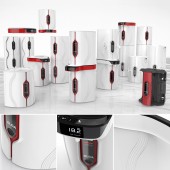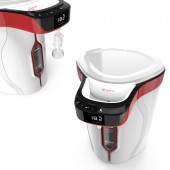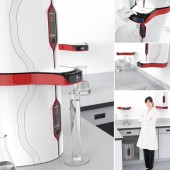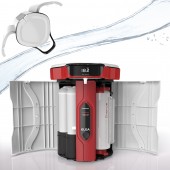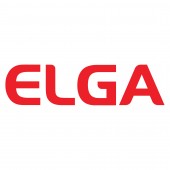PURELAB Chorus Laboratory Water Purification System by L A Design |
Home > Winners > #32812 |
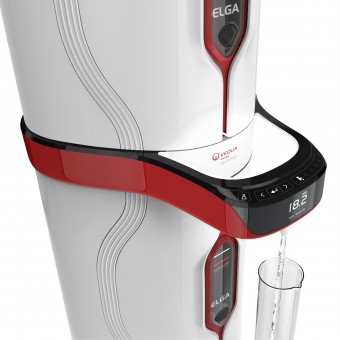 |
|
||||
| DESIGN DETAILS | |||||
| DESIGN NAME: PURELAB Chorus PRIMARY FUNCTION: Laboratory Water Purification System INSPIRATION: Shorter research contracts require laboratories to be increasingly flexible, undertake variable applications and operate in a sustainable, cost effective manner. With current higher volume water systems based on fixed solutions, there was a clear opportunity for an adaptable system to meet changing pure water requirements, fit individual laboratory spaces and improve customer choice. User’s required better system communication, highly controllable dispensing and improved internal access. Central to the development was the quest to embody an emotional intelligence, using symbolism to represent the purity of the water being processed. UNIQUE PROPERTIES / PROJECT DESCRIPTION: Purelab Chorus is the first modular water purification system designed to fit individual laboratory needs and space. It delivers all grades of purified water and provides a scalable, flexible, customized solution, offering a selection of dispensing, storage and installation options. Modular elements can be positioned independently or combined into a unique tower format to minimize footprint. New technologies reduce environmental impact and make Chorus the most intelligent product on the market. OPERATION / FLOW / INTERACTION: Chorus' central touch point is the halo dispense control, cantilevered from the main body to provide a generous space for vessels. A ring of light communicates its status, symbolizing the purity of the water:- glowing white to express ultra-pure water quality is available (and all is well) or red if Chorus needs attention. This light is projected onto the main enclosure, enhancing its physical presence and ensuring that even from a distance, the instrument is communicating with its surroundings. Haptic controls offer six dispense options, from auto-volume to drip dispensing. The dispenser can be positioned independently for wall mounting. This allows purification and reservoir modules to be located under bench or combined in a tower format, where the vertically running ‘swirl lines’ integrate the architecture and express the fluidity of the process. Access to the instrument’s internal consumables and features is unique, with two central doors opening to offer all-round entry. Every physical touch point has been purposefully designed - from the integrated door handle rims which flow around the central display panel to the way internal consumables can be removed with one hand. PROJECT DURATION AND LOCATION: Strategic design started in October 2010. The product was showcased at Pittcon 2013 and released in January 2014. FITS BEST INTO CATEGORY: Medical Devices and Medical Equipment Design |
PRODUCTION / REALIZATION TECHNOLOGY: The Chorus range uses seventy-one injection moldings made from thermoplastic materials. The main module comprises of six main moldings: chassis, doors (symmetrical), front panel, rear and top covers. Chorus' carefully engineered chassis provides standardization. Multiple cartridges, consumables, valves, pumps and filters can be fitted to produce a custom specification. Only ten additional screws are required to construct the entire product range. As a result, customization can be added late in the product build, dramatically reducing stock requirements. New purification technologies such as the De-Gas module, multiply the lifespan of consumables ten-fold to dramatically reduce environmental impact and running costs. Chorus’ packaging uses one hundred percent recyclable cardboard. SPECIFICATIONS / TECHNICAL PROPERTIES: Width 395mm x Depth 475mm x Height 920mm Weight: 92.5lbs (42kg) Price: US$4500 to US$20,000 TAGS: Laboratory, Science, Water, Pure Water, Clinical Water, Research, Testing, Healthcare, Electrodeionization, Ultrafiltration RESEARCH ABSTRACT: Research was undertaken to evaluate market, stakeholders, customers and product requirements. Elga's current products were assessed comparatively against competitors products through physical testing. Laboratory trends were studied alongside ethnographic research, undertaken in four laboratories to study scientists at work in their environments. Customer and stakeholder interviews were conducted to determine joint requirements and priority factors through score voting. This involved personnel from sales and marketing, research and development, engineering, manufacturing, technical support, purchasing and finance, quality control, customer services, international sales teams and executives. Resulting ideas were grouped into scenario themes. These were modeled or visualized for stakeholder and customer feedback. After iteration, the new product development strategy was formulated. CHALLENGE: Purelab Chorus is the biggest project in Elga's seventy-five year history. Replacing sixty-five existing products and variants, it represents a high proportion of Elga’s business. Reducing the risk associated was essential. Rationalizing the product range into just twelve modular elements, increasing user experience benefits and future proofing the system became key challenges. The innovative modular chassis, with its requirement to load-bear high volumes of water and fit multiple components, needed extensive engineering design. Purification modules, dispensers and storage tanks required the development of a smart-link technology, allowing the system to work when elements are combined or positioned independently. Incorporating new, greener purification technologies, utilizing ambient communication and designing a visually iconic dispenser were all key requirements for differentiating the Elga brand from its competitors. ADDED DATE: 2014-02-20 04:55:27 TEAM MEMBERS (5) : Pete Holdcroft (LA Design), David Robinson (LA Design), Lee Underwood (ELGA), Matthew Dobson (ELGA) and Steve Bryant (ELGA) IMAGE CREDITS: LA Design 2014 |
||||
| Visit the following page to learn more: http://www.la-design.co.uk | |||||
| AWARD DETAILS | |
 |
Purelab Chorus Laboratory Water Purification System by L a Design is Winner in Scientific Instruments and Research Equipment Design Category, 2013 - 2014.· Read the interview with designer L A Design for design PURELAB Chorus here.· Press Members: Login or Register to request an exclusive interview with L A Design. · Click here to register inorder to view the profile and other works by L A Design. |
| SOCIAL |
| + Add to Likes / Favorites | Send to My Email | Comment | Testimonials | View Press-Release | Press Kit | Translations |
Did you like L a Design's Scientific Instrument Design?
You will most likely enjoy other award winning scientific instrument design as well.
Click here to view more Award Winning Scientific Instrument Design.


